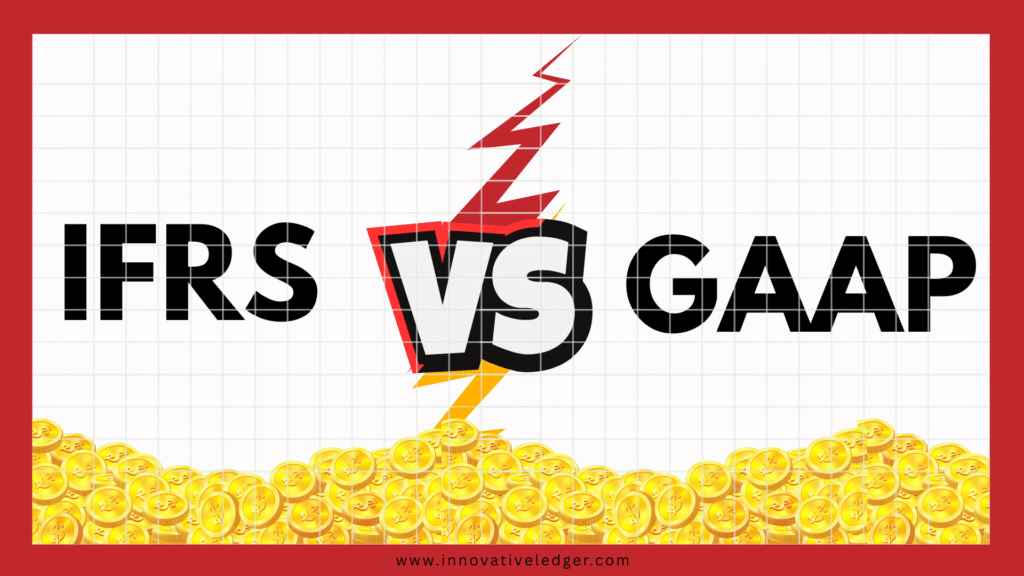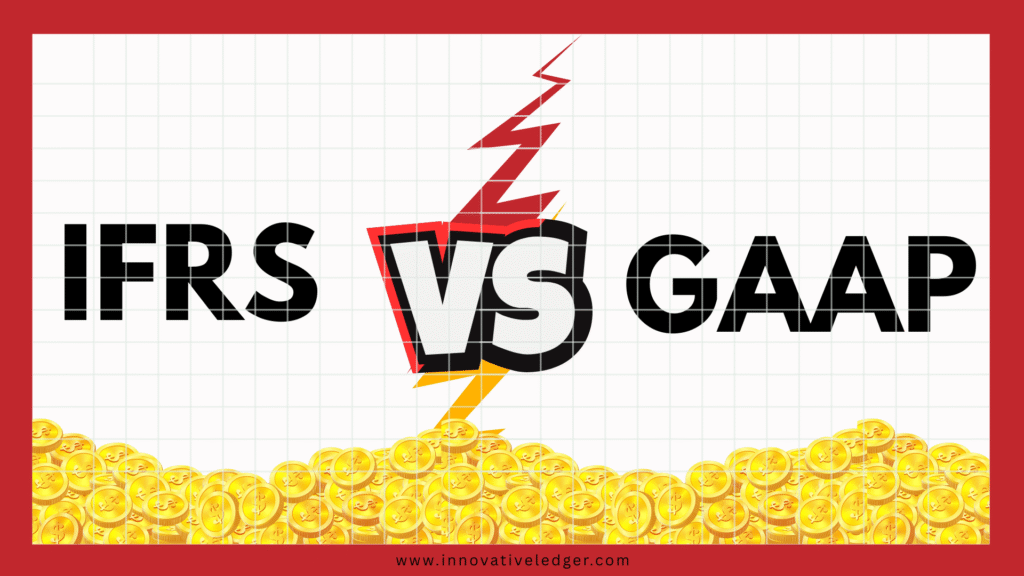
Why Understanding IFRS vs. US GAAP Can Give Your Business the Global Edge
In a business world where international expansion is more common than ever, understanding the rules that guide financial reporting across borders is no longer optional in fact it’s essential. Whether you’re a startup or a multinational corporation dealing with global operations, the accounting standards you follow can shape how your company is perceived, taxed, and evaluated.
Two primary frameworks dominate financial reporting: International Financial Reporting Standards (IFRS) and the United States Generally Accepted Accounting Principles (US GAAP). Though both aim to ensure financial transparency, they approach the same financial events in distinct ways. If you don’t know the difference, you could be missing vital opportunities.
So here we are breaking down the most crucial differences between these two systems, so you can make smarter financial decisions and lead confidently in the global marketplace.

10 Key Differences That Matter
1. Reach and Relevance
IFRS has become the international norm, adopted by over 110 countries across Europe, Asia, Africa, and South America. US GAAP, in contrast, is specific to the United States. This distinction matters. Companies operating globally may need to prepare dual reports or reconcile data across both systems to stay compliant in every market they serve.
2. Rules vs. Principles
Think of US GAAP as a tightly structured rulebook. It offers detailed instructions and leaves little room for interpretation. IFRS, on the other hand, is built on guiding principles. It calls for professional judgment, asking accountants to assess the economic substance of transactions rather than follow a checklist.
This flexibility can be both a strength and a challenge. Under IFRS, accountants can better reflect the reality of complex transactions. But without detailed rules, interpretations may vary between companies or even countries.
3. Inventory Valuation
When valuing inventory, both systems support methods like FIFO (First In, First Out) and weighted-average cost. But only US GAAP allows LIFO (Last In, First Out), a method that can reduce taxable income during inflation. IFRS prohibits it.
Why does that matter? A company reporting under US GAAP might appear to have lower profits and lower taxes than a similar company using IFRS. For investors and analysts, comparing such firms becomes complicated.
4. Reversal of Inventory Write-Downs
If inventory loses value, both systems require it to be written down. However, IFRS allows that loss to be reversed if market value rebounds. US GAAP does not. This small difference can have big effects on how a company’s health appears year-to-year.
5. Asset Revaluation
One of the more flexible aspects of IFRS is its allowance for companies to revalue tangible and intangible assets like real estate or equipment. If the fair market value increases, companies can reflect that in their financials. US GAAP, being more conservative, typically doesn’t permit upward revaluations except for certain securities.
This means IFRS-based statements might show stronger asset positions which can attract investors or affect borrowing capacity even when the underlying asset hasn’t changed.
6. Treatment of Impairment
When an asset loses value permanently, both systems require companies to recognize an impairment loss. But only IFRS allows this loss to be reversed (except for goodwill) if conditions improve. US GAAP forbids reversals completely, meaning once an asset’s value is written down, it stays down for good.
This makes IFRS more responsive to real-world changes, while US GAAP maintains a cautious approach that prevents overestimating recoveries.
7. Accounting for Intangible Assets
When it comes to things like research and software development, the standards diverge sharply. IFRS permits capitalization of development costs but only under strict criteria. US GAAP typically expenses these costs as they’re incurred, with some exceptions for software.
This can significantly affect reported profits, especially in industries driven by innovation like tech, biotech, or entertainment.
8. Depreciation of Long-Term Assets
Under IFRS, companies must break down large assets into components and depreciate each one based on its individual useful life. US GAAP allows for this level of detail but doesn’t require it. IFRS can offer a more accurate picture, while US GAAP opts for a simpler, more standardized method.
9. Investment Property
IFRS recognizes investment property as a separate category — buildings or land held to earn rental income or appreciate in value. These can be revalued to fair market value. US GAAP doesn’t recognize this category at all, meaning real estate investors might prefer IFRS reporting for more transparent valuation updates.
10. Lease Accounting
While recent updates have brought US GAAP and IFRS lease standards closer together, differences still exist. For example, IFRS allows companies to exclude leases of low-value assets from balance sheets while US GAAP does not. IFRS also includes certain types of intangible assets in its lease rules, whereas US GAAP excludes them entirely.
For companies with complex lease structures, these distinctions can impact liabilities, ratios, and even compliance with lending terms.


